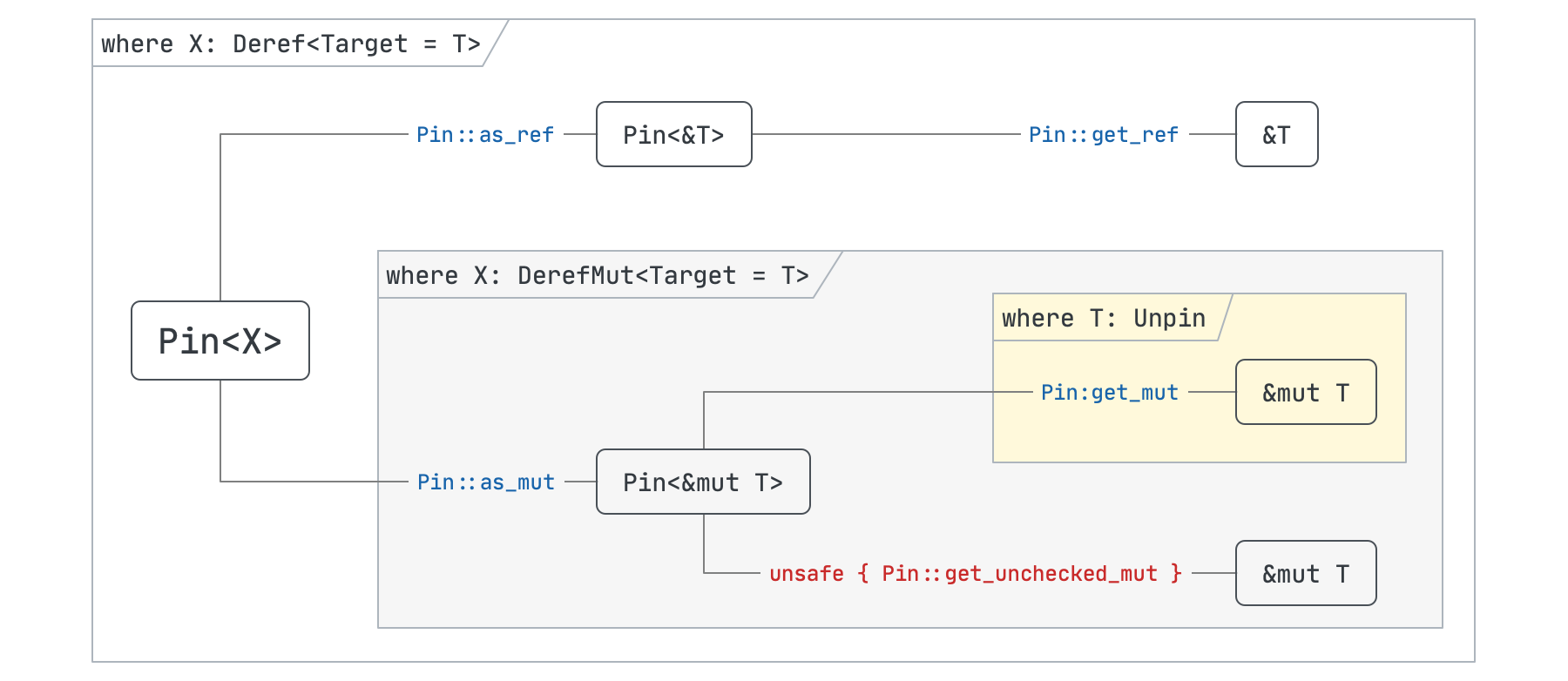Pin is an obscure type in Rust because of the naming and indirect concepts.
The first indirect concept is pointer. Pin<X> does not guarantee that X will not move. If X is a pointer which target type is T, Pin<X> guarantees that T will not move.
The second is “not move”. It really means that the only way to get the mut reference to T is via unsafe interface.
The last is the Unpin mark trait. Pin forbids safe interface to get the mut reference to T only when T is !Unpin.
In simple words, Pin is a pointer wrapper. When a pointer is trapped inside Pin, and the pointee type is !Unpin, there’s no safe way to get a mut reference to the pointee.
The following diagram has listed what Pin provides and constraints on when we can use those functions.

In Rust, the pointer is indeed the trait Deref and DerefMut, from which we can get the shared or mut reference.
It is not very interesting when the pointer is Deref. The essential of Pin is when X is DerefMut. The yellow box shows that the safe interface to get the mut reference is available when T is Unpin.
Unpin is implemented for types by default. It acts as a safety which disables the core feature of Pin. Pin is only effective when the safety is turned off, a.k.a, when the type is explicitly marked as !Unpin via PhantomPinned.
Pin is a signal that a self reference type may appear here. It is also a contract. The type provider must mark the type as !Unpin if it is unsafe to move. The type user must promise not to move the !Unpin data in the unsafe block.
Further Readings
The pin module document has explained why and the typical scenario.
It is sometimes useful to have objects that are guaranteed not to move, in the sense that their placement in memory does not change, and can thus be relied upon. A prime example of such a scenario would be building self-referential structs, as moving an object with pointers to itself will invalidate them, which could cause undefined behavior.
Pin was suggested in RFC#2349. It was also well explained in the book Futures Explained in 200 Lines of Rust.